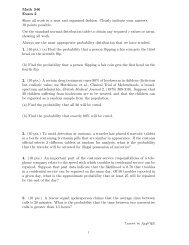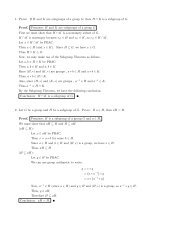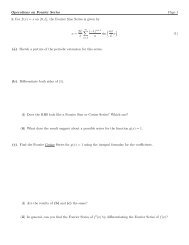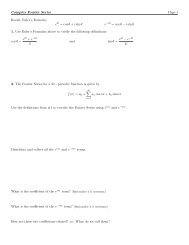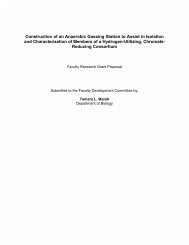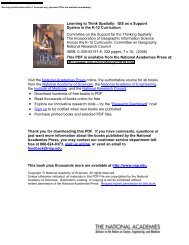CHAPTER 7: CARDIOVASCULAR SYSTEM
CHAPTER 7: CARDIOVASCULAR SYSTEM
CHAPTER 7: CARDIOVASCULAR SYSTEM
Create successful ePaper yourself
Turn your PDF publications into a flip-book with our unique Google optimized e-Paper software.
Sometimes called the silent killer because it may not be detected until a stroke or<br />
heart attack occurs.<br />
Genetic predisposition.<br />
D. Atherosclerosis<br />
An accumulation of soft masses of fatty materials, including cholesterol, beneath the<br />
inner linings of arteries –– plaque.<br />
As plaque develops, it tends to protrude into a vessel interfering with blood flow.<br />
Atherosclerosis begins in early adulthood and develops progressively through middle<br />
age, but symptoms may not appear until an individual is age 50 or older. Plaque can<br />
cause a clot to form on the arterial wall.<br />
As long as the clot remains stationary, it is called a thrombus.<br />
If a clot dislodges and moves along with the blood, it is called an embolus.<br />
Aspirin reduces the stickiness of platelets and thereby lowers the probability that a<br />
clot will form.<br />
E. Stroke, Heart Attack, and Aneurysm<br />
A cerebrovascular accident (CVA) also called a stroke, often results when a small<br />
cranial arteriole bursts or is blocked by an embolus.<br />
A lack of oxygen causes a portion of the brain to die, and paralysis or death<br />
can result.<br />
A myocardial infarction (MI), also called a heart attack, occurs when a portion of the<br />
heart muscle dies due to a lack of oxygen.<br />
If a coronary artery becomes partially blocked, the individual may then suffer<br />
from angina pectoris, characterized by radiating pain in the left arm.<br />
When a coronary artery is completely blocked, a heart attack occurs.<br />
An aneurysm is a ballooning of a blood vessel, most often the abdominal artery or<br />
the arteries leading to the brain.<br />
Atherosclerosis and hypertension can weaken the wall of an artery to the<br />
point that an aneurysm develops.<br />
F. Varicose veins develop when the valves of veins become weak and ineffective due to the<br />
backward pressure of blood.



